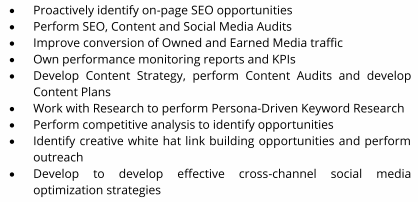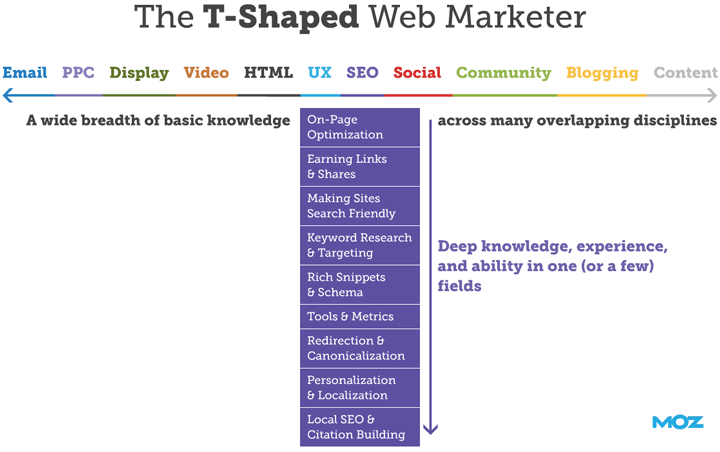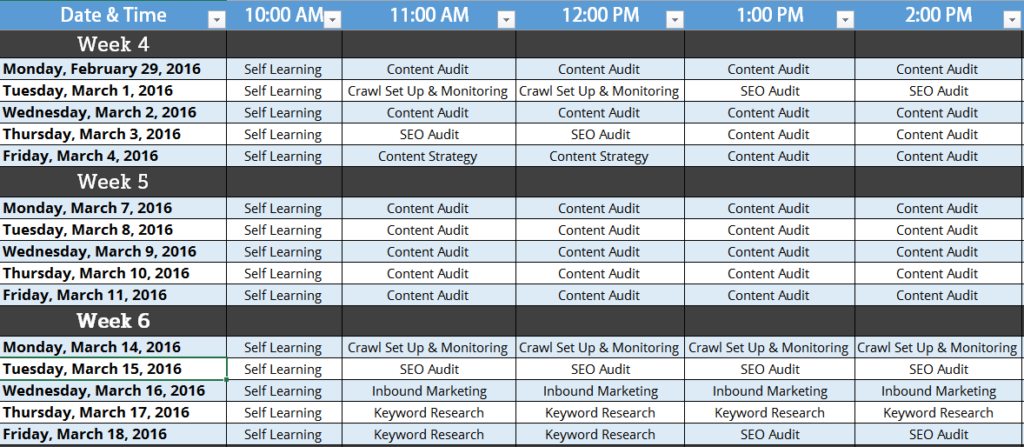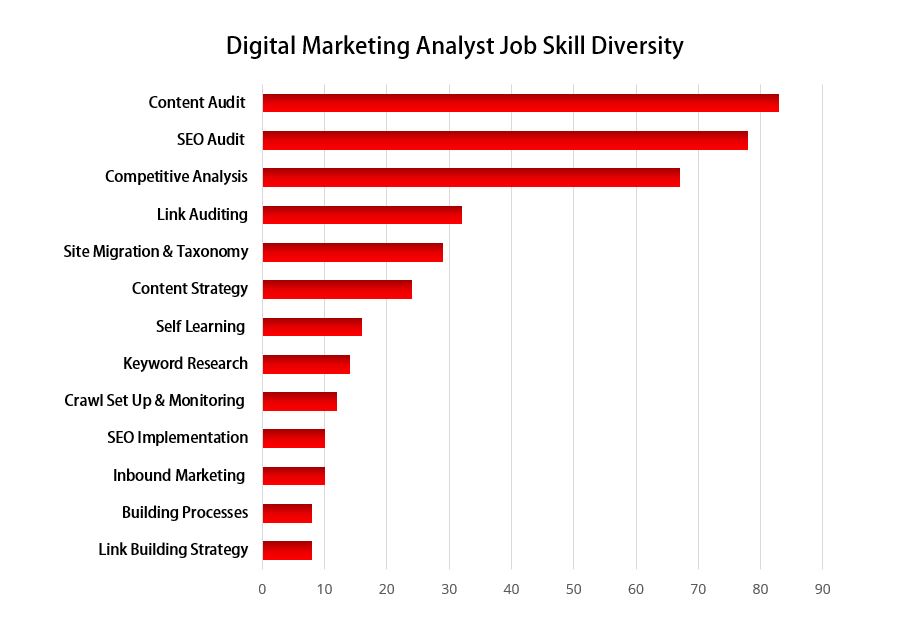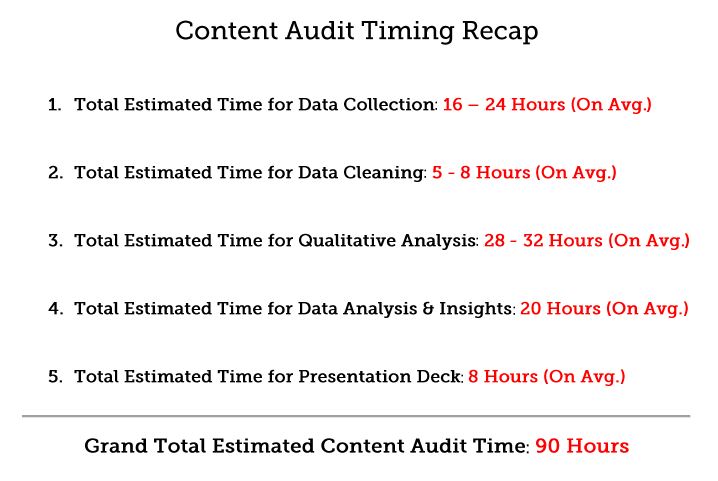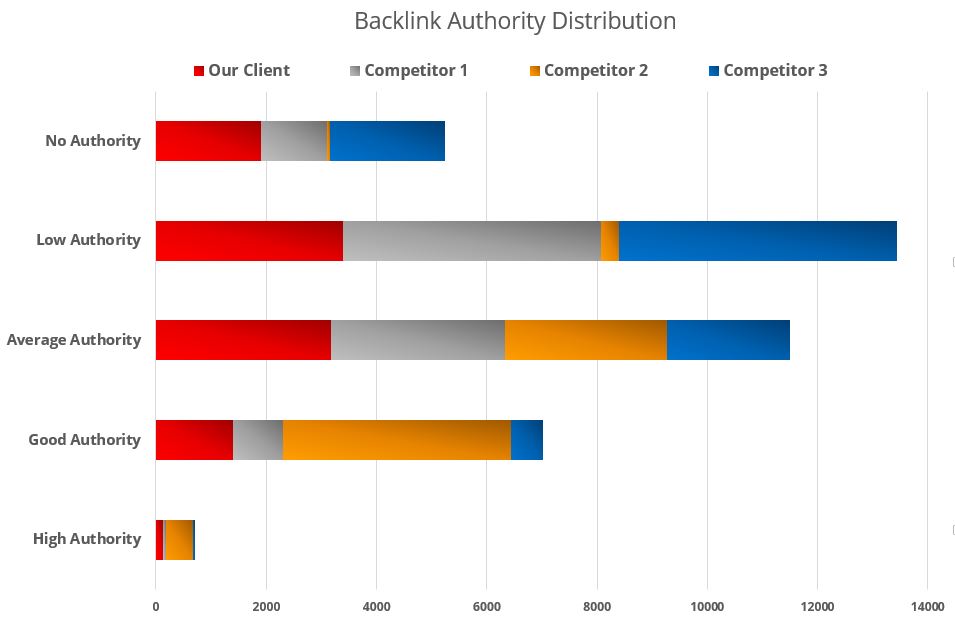When I first got hired as a Digital Marketing Analyst, I didn’t know what to expect. From the beginning, there were high expectations of me to become diverse and execute on a number of facets within this crazy, fast paced world we call Digital Marketing. As I reflect on how much I’ve learned over the course of 13 months, my personal and professional growth has been a bit mind-blowing. That said, I thought it’d be cool to track all my work activities for 3 months to get a better sense of how my time is spent at work, and how diverse an analyst’s skill set should be in 2016.
Time Tracking: What’s The Point?
The featured chart breaks down the sum of hours spent on each work activity over the past 3 months. The main purpose of time tracking in this context is to get a ballpark understanding of my workload distribution, and what skills are required to perform the work effectively. We also track time for other reasons:
- To make data-informed hiring decisions.
- To determine what areas we need to pull resources from.
- To help project management create better project timelines.
- To align price cards and campaign fees according to how much time each service actually takes.
To streamline this process, we use a project management & time tracking tool called Teamwork.
The T-Shaped Web Marketer
At first glance, my job description appeared to be quite hefty. I thought that I’d be primarily executing on SEO, but Mike had plans for me to be far more diverse than that. Here’s some of the things that were outlined in my job description.
Aside from SEO, there’s a good blend of Content, Social, Reporting, and Link Building involved. This is what is known as the T-Shaped Web Marketer. Rand Fishkin nicely outlines the concept of skill breadth vs. depth in this visual.
Methodology
This was quite simple. I used our project management tool to get an export of all my time tracking, then cleaned the data and consolidated it into a more digestible excel sheet upon which I could create pivots from. Here’s a snapshot of what my excel sheet looks like.
Note: This was a very heavy Content Audit month. The demand for certain services tends to fluctuate, but the overall results are showing just as much of a demand for Content Strategy as there is for SEO, if not more.
To clean and simplify the data, I tracked micro-tasks and at the end grouped them into macro-tasks. For example, working on blog posts and newsletter content for iPullRank.com was lumped into “Inbound Marketing.” Any time spent on client calls and follow-ups were aligned to whichever task that call was associated with. So if I was presenting an SEO Audit deliverable to a client, the time spent on that call would be counted under “SEO Audit.”
Additionally, there are a number of micro-tasks within each larger macro-tasks that were not mention for sake of simplicity. If I use Content Audits as an example, there’s Qualitative & Quantitative Analysis that can be broken down into about a dozen sub-tasks for each. Those were all tracked and consolidated into “Content Audit.”
Insights & Outcomes
Workload Distribution: 3 Months
Content & SEO Audits Take A Lot Of Time
This was to be expected. As part of “Building Process” we’ve been working as an organization to create deliverable documentation with timing estimations. Here’s a look at what I came up with for Content Audits. Does this seem on par with what it takes to do an exhaustive Content Audit? You tell me.
Competitive Analysis Takes A Lot Of Time Too
This one wasn’t as expected. However, we’ve recently revamped our formula for how we evaluate the competitive landscape through the lens of search. Our strategy for competitive analysis is now more comprehensive than it used to be. That said, it takes a bit longer to execute but the insights are much juicier. This is one of my favorite insights from a recent competitive analysis I’ve done. This is also an insight that I’d be likely to include in a link audit as well. For data collection, I used my favorite “go-to” link auditing tool, Cognitive SEO.
The insight is that our client has too many No / Low Authority Links, meanwhile Competitor #2 is dominating the Good / High Authority Links.
Don’t Skimp On Self-Learning
Far too often I hear, “I just don’t have the time for self-learning.” Sorry to tell you this, but somewhere in the world – someone else IS making time for self-learning. Don’t be surprised when you don’t get the job you want for the work you never did.
Self-Learning has been crucial to my personal and professional success. I always dedicate the first hour of my day to self-learning, even if it means I may need to stay an hour late to finish client work. My self-learning ranges from reading actionable marketing articles, attending webinars, watching tutorial videos, or taking learning courses online through Media Bistro, Coursera, HubSpot, Code Academy, or Google Certifications.
Lately I’ve been taking this SQL Table Transformation course on Code Academy. As digital marketers, we know excel sucks when it comes to working with data sets that are over a few hundred thousand rows. We can’t just be reliant on tools with such limitations, so I’m dedicating time to learn how to manipulate large data sets by just pulling queries that I need through relational databases like MySQL. I probably won’t be a data science wizard anytime soon, but I believe I’m on the right path.
Closing The Gaps
The last beautiful outcome as a result of time tracking is you get to see where the gaps in your skill sets are. For example, I’m spending most of my time working on SEO, Content, Links, Competitive Intelligence, and Content Migrations. Taking a step back from all that, the immediate areas of opportunity (for me at least) are paid social, paid search, content promo, link building strategy, and experimentation. I’ve always been jealous of the cool case studies / industry reports that Dr. Pete Meyers does for Moz. They’re really insightful and well executed. I’d love to collaborate and work on one of those at some point in my career.
I hope this post was valuable to anyone who wants to be a digital marketer, or anyone who already is a digital marketer but wants to improve their skill sets. I’d also be interested in comparing / contrasting my results to other marketing analysts. As always, I look forward to your comments and feedback. Thanks for reading!
Need expert help with SEO strategy? Contact Us!
- What Does A Digital Marketing Analyst Do? - April 29, 2016
- 9 Problems With Content Audits (And How To Solve Them) - March 16, 2016
- 6 Epic Lessons I Learned From My First Agency Job in 2015 - January 13, 2016

